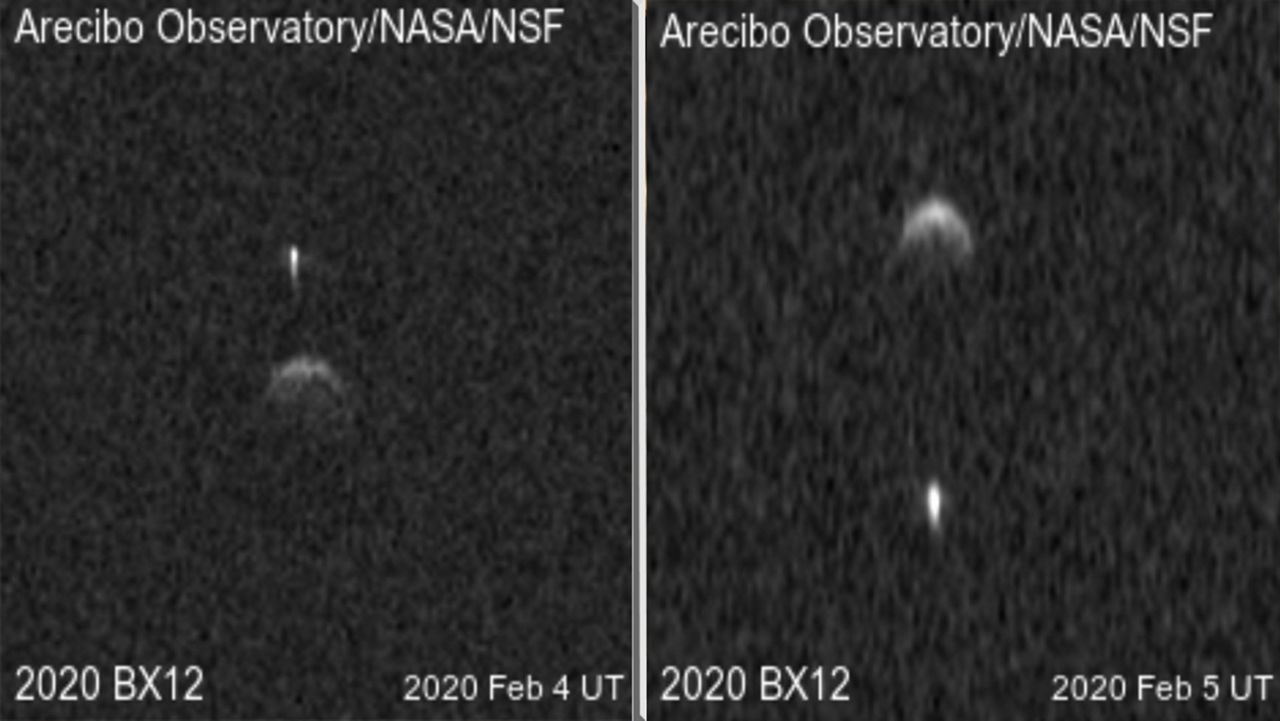ORLANDO, Fla. — The Arecibo Observatory in Puerto Rico found the recently discovered near-Earth asteroid, 2020 BX12, has its own moon.
1. The detection of the moon was discovered on February 4, 2020 during the first planetary radar conducted after a month-long shutdown of telescope operations caused by the series of earthquakes in the southern part of Puerto Rico.
The radar observations were conducted by Luisa Fernanda Zambrano-Marín, Sean Marshall, Anne Virkki, Dylan Hickson, Anna McGilvray, Johbany Lebron, and Israel Cabrera of the Arecibo Observatory, which is run by a partnership that includes University of Central Florida and Yang Enterprises, Inc.
2. 2020 BX12 was discovered on January 27, 2020 by the ATLAS survey on Mauna Loa in Hawaii and fits the definition of a potentially hazardous asteroid (PHA) due to its size and minimum orbit intersection distance (MOID) of 302,000 km (188,000 miles) from the Earth.
3. The asteroid is estimated to poise no danger, despite the fact that it could come closer to the Earth than the moon, because it's receded from the Earth's atmosphere.
4. According to the Arecibo Observatory, preliminary analysis suggests 2020 BX12 is a round object at least 165 meters in diameter rotating approximately once every 2.8 hours or less. The moon has a diameter of approximately 70 meters and rotates once every 49 hours or less.
5. Based on the last observation on February 5, 2020, the distance between the two bodies is at least 360 meters.
6. The moon appears brighter than 2020 BX12 in the radar images, which is common for radar images of binaries.
INTERACTIVE: Arecibo Observatory in 360 Degrees
In 2018, Spectrum News' Ybeth Bruzual and Tony Rojek went to Puerto Rico, including the famed Arecibo Observatory. They took a tour and shot this 360-degree video.




